The Burrow


‘I want to remind women that before and after having a baby, they absolutely deserve and have every right to a body that works and makes them feel good.’


Powell, Reynolds and Mangahas provided exercise tips for your pregnancy or postpartum journey. It is our hope that these tips empower you to maintain, and recover towards, the body you deserve. We also broke down some of the top benefits of exercising before and after birth.
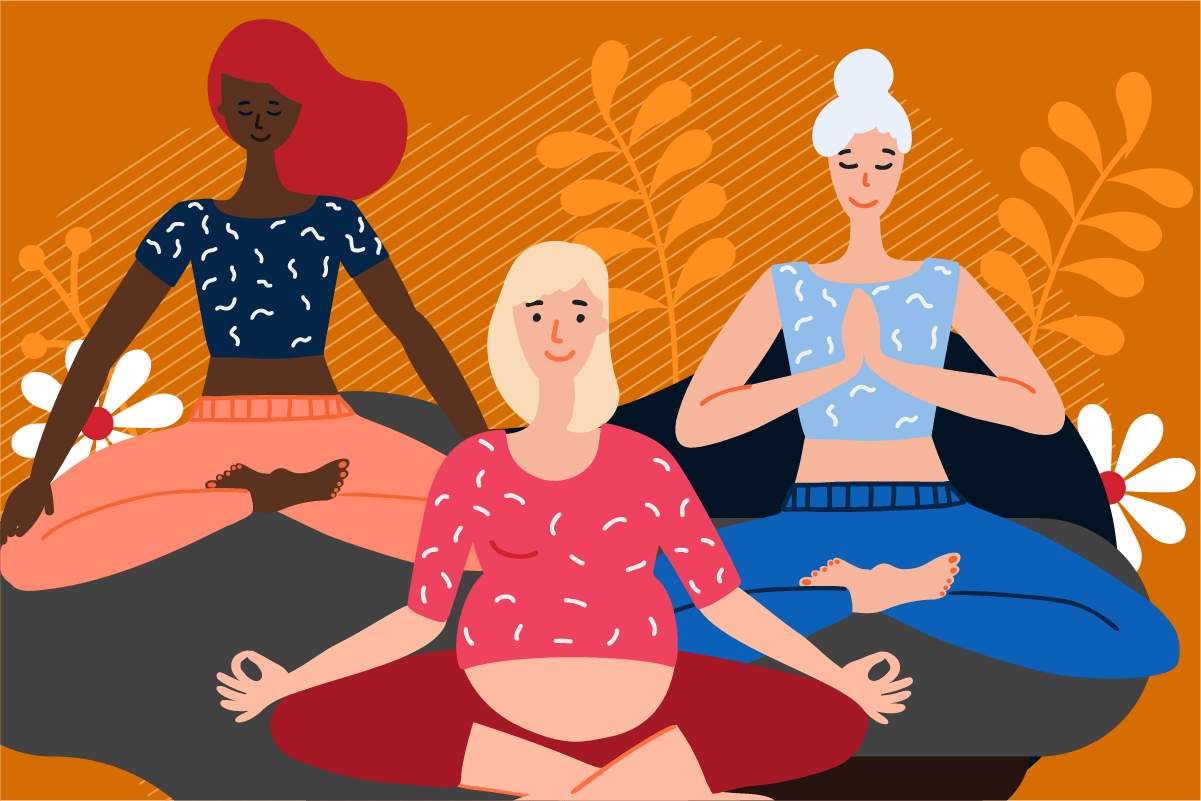 |  | 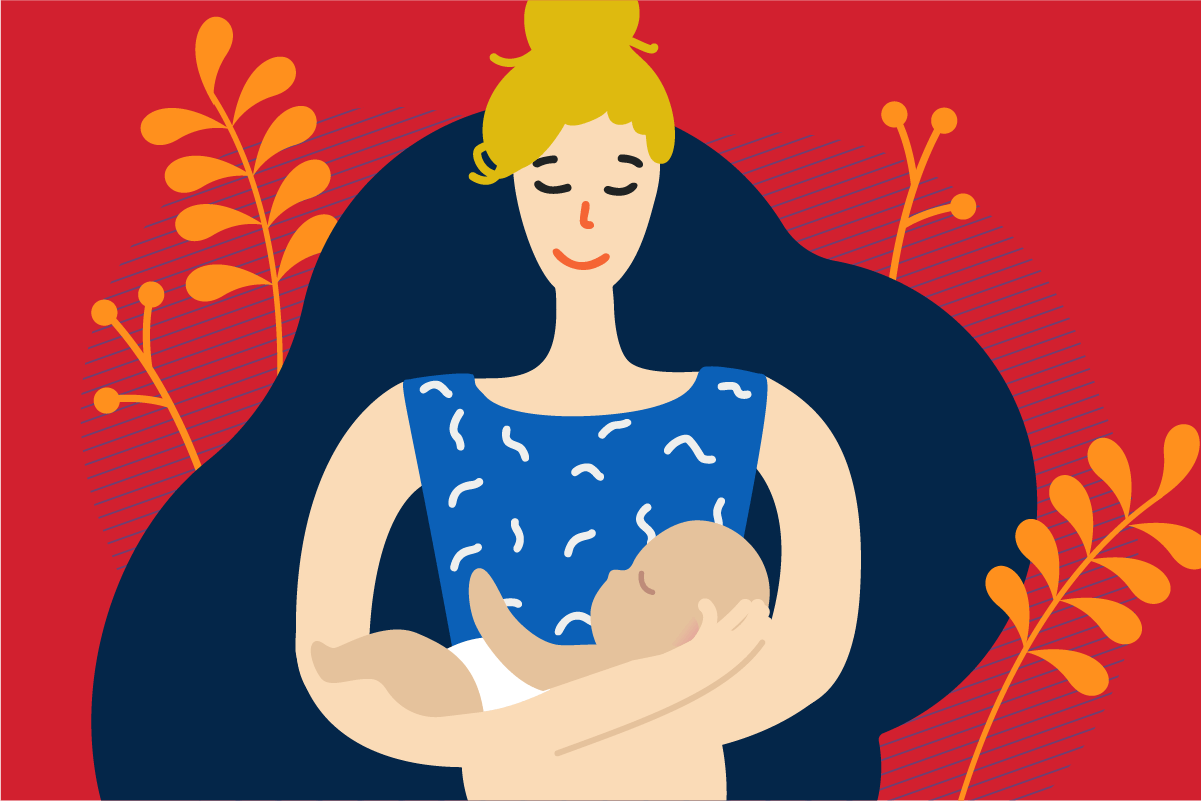 |
The benefits of exercising pre and postpartum | Exercise tips if you’re pregnant | Exercise tips if you’ve given birth |
Remember: Every woman is unique, and so is every pregnancy! As such, all information on this page is general and must be taken as a guide only, and not used as medical advice. You should seek individualised advice from your GP and/or midwife before trying any exercise.

Reynolds from Blossoming Bellies Physiotherapy explained that exercising during pregnancy can have a profound impact on the health outcomes of two generations: the mother and the baby.
‘For example, [it] can reduce the risk of the mother developing gestational diabetes and pre-eclampsia.’ Pre-eclampsia is characterised by high blood pressure and can cause damage to organs.1
Reynolds also said keeping fit could help women cope better with the demands of pregnancy.
American College of Obstetricians and Gynecologists stated that exercise may even help reduce the risk of caesarean birth, as well as help prevent depressive disorders after giving birth.2
‘The motivation to look after their unborn child is often high,’ said Reynolds.
‘This makes pregnancy a great time to encourage life-long exercise habits which can continue long after the baby is born.’
The Victorian Government’s Better Health Channel echoed this sentiment, stating physical activity could also help you recuperate faster after labour.4
After baby’s arrival, the Better Health Channel said appropriate exercise could help improve your mood and condition your abdominal muscles, among a range of other benefits.
‘It is important women exercise at a capacity that their bodies can tolerate, both during pregnancy and the postnatal period,’ said Reynolds.

Tips on first trimester exercises
During the first trimester, it’s likely you’re not feeling crash hot, and we bet the last thing you feel like doing is working out.
‘A large proportion of women in the first trimester suffer from nausea and/or vomiting, which reduces their participation in exercise during this time,’ Reynolds said.
‘They should do only what they can tolerate until they start to feel better.’
However, Reynolds told us that many pregnant women could safely continue their pre-pregnancy exercise regime, within their comfort levels. That is, if they’re up to it and don’t face any specific medical conditions that exclude them from exercising.
During pregnancy – as early as possible – Powell from MUTU System urges the importance of pelvic floor exercises.
Such exercises, like Kegels, can help strengthen your pelvic floor and can help with your baby’s delivery (if you’re not having a c-section). What’s more, a stronger pelvic floor provides a lower chance of an episiotomy (a cut to help delivery) or tearing during delivery.5 It can also help with urinary incontinence before and especially after giving birth.
‘At MUTU, we teach clients to reconnect their pelvic floor and core through breath,’ said Powell.
‘This means you relax everything as you inhale – so you relax your pelvic floor and your abdominal muscles. And then, on the exhale, you lift your pelvic floor, and draw everything up inside you.’
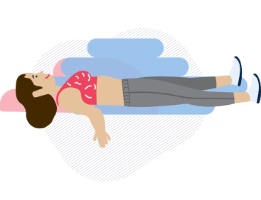 | 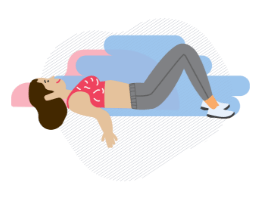 |
| Step 1: Relax your entire body as you inhale | Step 2: As you exhale, lift your pelvic floor and draw everything up inside you. Repeat often throughout pregnancy and beyond |
‘Approaching pelvic floor exercises in this way helps you do what a lot of women get wrong,’ said Powell.
‘Women go wrong when they’re actually contracting other muscles, like their glutes or their inner thighs, instead of their pelvic floor muscles,’ said Powell.
Powell also explained that creating muscle memory before childbirth can also help with your recuperation once your baby is born.
‘If you try pelvic floor exercises after birth, you might not feel it so well afterwards,’ she said.
‘But, if you do it before, there will be that muscle memory.’
Exercises to avoid during early pregnancy
Mangahas from Studio Pilates said it’s a good idea for women to start weaning themselves off any heavy abdominal and inner thigh work.
‘Strong abdominal exercises should be avoided as this can make abdominal separation worse as the pregnancy progresses,’ he said.
| Abdominal separation, also referred to as ‘diastasis recti’, occurs when the muscles that make up a ‘six-pack’ on your stomach separate from the middle and form a gap. We touch on this in more detail under exercise tips zero to six weeks after giving birth. |
‘Any direct inner thigh work can start to pull on the pubic bone, which is a common area of pain for women who are pregnant,’ Mangahas added.
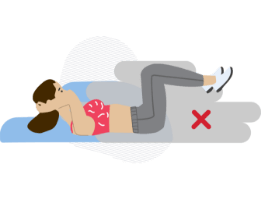 | 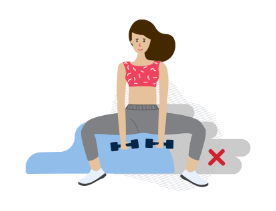 |
| Heavy abdominal workouts may increase abdominal separation | Heavy inner thigh workouts could cause pain at your pubic bone |
Reynolds also warns off those higher-risk activities, like scuba diving and sky diving for the more daring mums-to-be. Hot yoga is also off the table, as you don’t want to increase your body temperature too high.6
Powell added that it pays to play it carefully and listen to your body – now more so than ever.
‘If something feels wrong, weird or not quite right, it probably isn’t, so you should stop,’ she advised.
‘It’s about common sense, staying hydrated, resting when you need to and stopping right away if you ever feel dizzy or queasy.’
Tips on second-trimester exercises
For many women, the second trimester brings with it some more energy compared to the first 12 weeks.
‘This is the perfect time to exercise more regularly,’ said Reynolds. ‘A combination of aerobic exercise and resistance training is often best.’
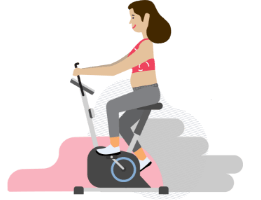
Top tips while exercising during pregnancy:
– avoid raising your body temperature too high;
– choose lower weights and medium to high repetitions; and
– don’t push yourself to exhaustion.
Exercises to avoid in the second trimester
‘During the second trimester, women should definitely avoid contact sports and activities with a high risk of falling, if they haven’t already done so,’ said Reynolds.
Mangahas reiterated the importance again of keeping well away from abdominal work and inner thigh workouts.
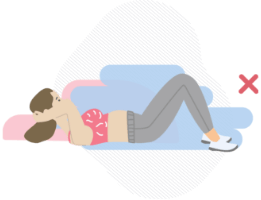
‘Any abdominal work [during the second trimester] will increase the risk of larger abdominal separation.’
— James Mangahas, Studio Pilates International Head Trainer
‘Any inner thigh workout can pull on the pubic bone and cause pain around that joint,’ he said.
Even laying on your back for certain exercises for long periods could cause discomfort.
‘This position can make women feel nauseous really fast, so it’s best to stay away from it, even if you sleep on your back.’
Tips for third-trimester exercises
Baby’s nearly earthside! By this point, exercise is becoming much tougher – and understandably so.
‘Most women find it increasingly more difficult to sustain higher levels of exercise due to fatigue and shortness of breath,’ said Reynolds.
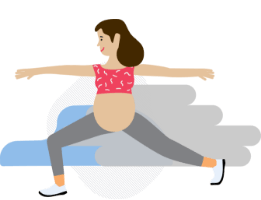 |
| ‘Low-impact exercises, like walking, swimming, stationary bike, yoga, Pilates and gentle resistance exercises are great during this time.’— Lauren Reynolds, Blossoming Bellies Physiotherapy |
Mangahas says the types of exercises to try should be low impact to reduce any stress on the joints. He also advised staying away from exercises that get your heart rate too high.
‘As a whole, it’s important to focus on strengthening the buttock muscles, and the muscles between the shoulder blades, as these may help reduce any postural changes that occur during pregnancy,’ he said.
‘Plus, these exercises provide a bit more stability in the body.’
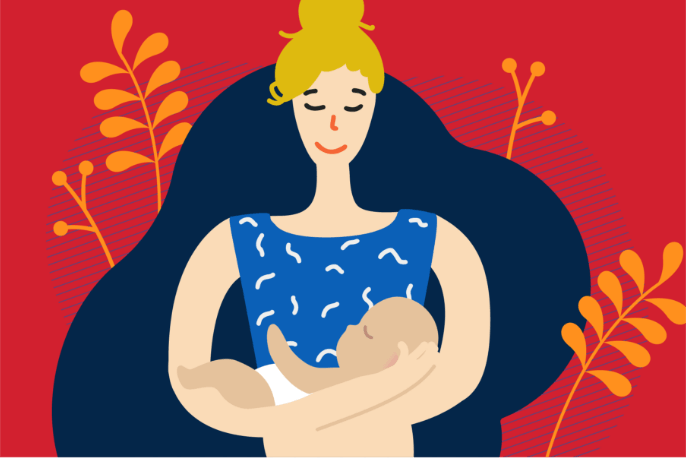
The world’s changed, or perhaps it’s changed again. And, for some mums, that means there could be a level of pressure to be on your a-game right away.
‘Certainly, in our culture, there’s a huge and unhealthy emphasis on bouncing back and getting your body back to looking a certain way,’ explained Powell.
But she implored new mums to be gentle and look after themselves.
‘A lot of women feel disempowered following birth experiences. It’s your body, and you deserve for it to work and to feel good again.
‘That means you shouldn’t be peeing yourself when you sneeze or jump, your core shouldn’t hurt, and neither should your back.
| ‘Women shouldn’t settle for lack of basic function and dignity and confidence, certainly post-baby.’ |
So, how soon after giving birth can you exercise?
Each of our experts said it’s important to seek guidance from your doctor, and – in some cases – a women’s health physio, to clear you for exercise.
‘As a general rule, women can start some basic exercises four-weeks post vaginal birth, and six weeks post a caesarean,’ explained Mangahas.
Powell said certain exercises could start the day after, if possible.
‘If you’re talking getting back to the fundamental core and pelvic reconnection work, then the day after birth is fine,’ she said.
‘However, if you’re talking about more intensive work, then you shouldn’t be ramping anything up until at least six to 10 weeks postpartum, depending on how the birth went, and on whether there was any trauma or complications.’
Exercise tips zero – six weeks postpartum
Settling into motherhood, letting your body heal and doing gentle walking are some of the top goals during this time.
However, Powell, Reynolds and Mangahas all agreed that starting some pelvic floor exercises is crucial in your journey to recovery. They also touched on the issue of abdominal separation.
Let’s delve a little deeper into what they told us.
Pelvic floor exercises after pregnancy
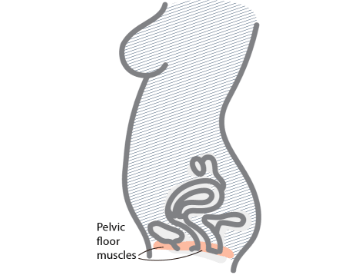
‘The pelvic floor is really important in providing stability to your pelvis and spine,’ Mangahas said.
‘The pelvic floor is usually weakened during pregnancy and needs to be “woken up” again before any exercise program begins.’
Powell reminded us that when it comes to ‘waking up’ the pelvic floor and strengthening it, you must be sure you’re actually engaging the correct muscles – and not other, larger muscle groups, like your glutes.
‘So, you need to learn how to contract, engage and relax your pelvic floor and understand how to coordinate that all with your breathing.
‘You then apply that every time you lift up your baby, to push or pull or jump or sneeze or laugh.’
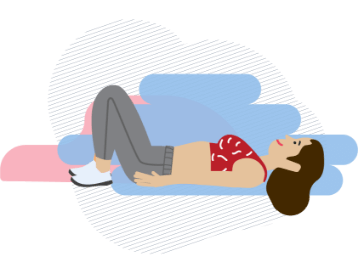 |
| Step 1: Relax your entire body as you inhale Step 2: As you exhale, lift your pelvic floor and draw everything up inside you Repeat |
Reynolds also reiterated that women should be educated on where their pelvic floor is and be properly assessed on whether they can achieve a good contraction of these muscles.
‘I often recommend women to have a postnatal assessment at six weeks post-delivery by a women’s health physiotherapist.’
Reynolds explained this would help identify any ongoing issues and to ‘guide them on return to exercise, return to sexual activity, etc.’.
 | 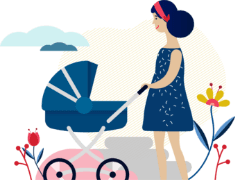 | 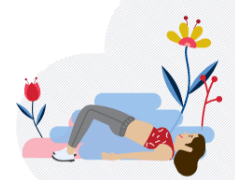 |
| Have a postnatal assessment to identify any ongoing issues | Walk every day – even if that’s simply moving around the home and yard | Work on pelvic and core reconnection – seek guidance from a medical professional if you’re unsure of how this should feel |
Treating abdominal separation after the birth
Abdominal separation, also referred to as ‘diastasis recti’, occurs when the left and right sides of the rectus abdominis muscle separate. The rectus abdominis muscle makes up those ‘six pack’ muscles, which meet in the middle of your stomach area.
This condition may occur throughout pregnancy due to the increased tension of the area.7
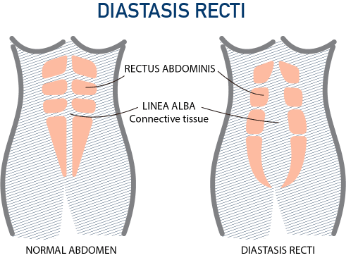
‘Every woman will develop some degree of abdominal separation towards the end of their pregnancy – this is normal,’ said Reynolds.
‘Some women will go on to have ongoing issues whilst other women will make an easy recovery within weeks of giving birth.’
Reynolds said she overall recommends women who are diagnosed with abdominal separation to make an appointment with a physiotherapist who specialises in pregnancy and postnatal.
‘These physiotherapists can:
Powell explained that abdominal separation isn’t the problem itself – it’s a symptom of a core that isn’t functional.
‘So, it’s not about just closing that gap; it’s about reconnecting those deep core muscles, the transverse muscles and the pelvic floor so that the whole muscle system can get back to where it’s supposed to be.’
When it comes to reconnecting those deep core muscles, Powell says it’s not a forceful movement.
‘You want to make sure that every time you inhale, it’s a full relax of everything.
‘Then, it’s literally a very gentle drawing in of your lower abs and pelvic floor as you exhale. You’re not sucking in your tummy, and you’re definitely not holding it in.’
| Accessing treatment postpartum An extras health insurance policy can help you access a range of subsidised out-of-hospital services, including physiotherapy and psychology – both of which may be invaluable in your road to recovery and adapting to life as a mother. Am I covered for Pilates classes under extras health insurance? If your Pilates class forms part of your physiotherapy treatment, you can still access rebates on these classes, up to the limit of your cover. However, you can no longer claim Pilates classes on your extras policy if they fall outside of physiotherapy, as per the 2019 health insurance reforms. Find out more about how an extras policy may help you. |
Exercise tips six to 12 weeks postpartum
Reynolds said many women could introduce postnatal yoga, Pilates, swimming and other body-weight exercises.
When it comes to strengthening your body, Mangahas said the process should be slow and gentle, particularly for stomach and ab exercises.
‘A lower intensity will allow the stomach and pelvis to heal from any stretching that may have occurred during pregnancy,’ he said.
‘Aside from this, exercises that focus on the muscles of the buttocks and between the shoulder blades should be priority.’
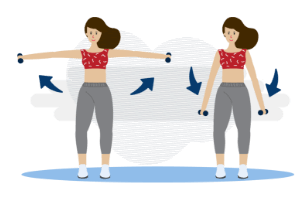 | 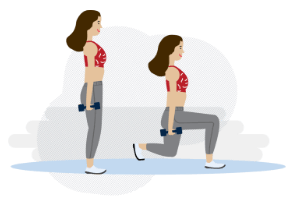 |
| ‘Strengthening the muscles between the shoulder blades will help improve posture, and may also help reduce headaches, neck or shoulder pain.’ | ‘Buttocks exercises will strengthen the hips and further support the lower back.’ |
Exercise tips 12 weeks+ postpartum
This is the point, according to Reynolds, where women can slowly start introducing their normal routine – although getting back on top of the pre-baby routine may take some time.
‘It takes a woman nine months to grow a baby; we have to expect it to take at least nine months for their body to fully recover,’ she said.
Mangahas explained that exercises from this point should be about ‘tailoring your program to gradually increase the strength in the stomach, hips and upper back’.
This also applies to your overall strength.
‘You’ll need your legs to be strong to be able to cart a stroller around, plus good arms to help hold and play with your new baby!’
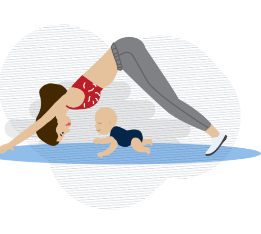 |
| ‘Pilates is a great way to exercise after pregnancy, as all of the exercises can be adjusted to be suitable for any stage postpartum.’ — James Mangahas, Studio Pilates International Head Trainer |
What should you keep in mind if you’ve delivered via c-section?
Powell and Mangahas said that after a c-section, understandably, the incision area is going to be sore.
‘C-sections might happen every day to thousands of women, but it’s still major surgery,’ said Powell.
‘The operation literally cuts through some of the stomach muscles, so we have to respect that,’ Mangahas said.
‘The layers of tissue need healing, circulation and hydration,’ explained Powell.
‘It also needs to move – not in terms of rigorous exercise, but walking every day will help with that healing.
‘Also, when you’re doing any core engagement or core connection exercises post-c-section, you’re not going to feel much in that area as there’s a lack of sensitivity around the scar site.
‘That means you need gentle movement.’
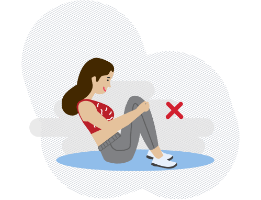 | 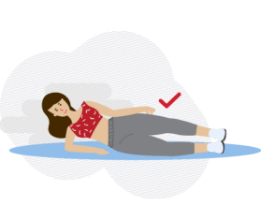 |
| ‘Avoid coming straight up from lying on your back. This can put extra pressure and force on the weakened abdominal wall.’ | ‘Instead, roll to your side first.’ |
So, there we have it! The experts’ tips and insights into exercising during and after pregnancy.
Above all, remember that every pregnancy and every post-labour experience is different. This means your exercise routine may look quite different from another’s – and especially from your pre-baby routine.
‘You’re not going to be aiming for your personal best in the same way,’ said Powell.
| ‘But you’re a lot more useful to your kids and to your family when you feel good about yourself when you feel strong, fit, healthy and energetic.’ |
Brought to you by Compare the Market: Making it easier for Australians to search for great deals on Health Insurance.